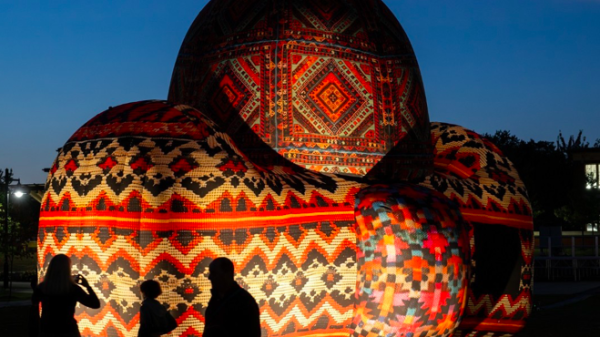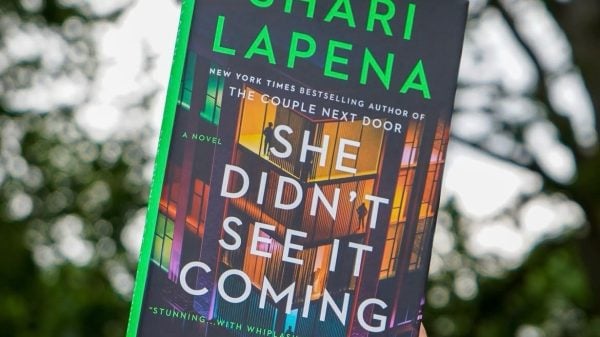To commemorate Canada History Week and the beginning of Canada’s 16 Days of Activism Against Gender Violence Week, we asked STYLE Canada contributor Asha Swann to help up us review the shameful, problematic, and complicated history of Canada’s missing and murdered Indigenous women and girls. Together, we’re hopeful that we can bring them justice. *Warning: this article contains graphic language.

Photo: @mmiwhoismissing
A Short History
In 2014, Tina Fontaine was reported missing for the third time. She was just one of nearly two dozen Indigenous women from the Sagkeeng First Nation who have been reported murdered or missing. The small community near Winnipeg is home to only 8,000 people. Tina was only 15 when her body was found in a bag filled with 25 pounds of rocks at the bottom of Manitoba’s Red River. At least 130 other women’s bodies have been found in this same river.
It wasn’t until Tina Fontaine’s accused killer was charged with second-degree murder but was found not guilty in court, that the Canadian government launched The National Inquiry Into Murdered and Missing Indigenous Women and Girls. This inquiry was based on forensic analysis, police records, witness testimonies, research, community hearings, collaborations with Indigenous Elders, and hundreds of survivor testimonies.

Photo: Tina Fontaine
The Problem Spans Decades
According to The Guardian, there have been over 4,000 Indigenous women declared murdered or missing. On average, an Indigenous woman in Canada is 12 times more likely to be abducted or murdered, despite Indigenous women only making up less than five percent of the country’s female population. It is unknown exactly how many Indigenous women and girls have been found murdered or declared missing.
The National Inquiry investigated the thousands of cases of Indigenous women and girls missing and murdered since 1980. However, the report reveals that for decades, the RCMP was less likely to accurately keep file of these missing women. Issues of inaccurate police data are still prevalent for missing Indigneous girls. In August 2020, the RCMP in Cape Breton came under fire for refusing to issue an Amber Alert for a 14-year-old girl who was a member of the We’koqma’q Mi’kmaq First Nation. It wasn’t until she was missing for a week with a huge public outcry that a small, localized Amber Alert was created.
Community members also say the RCMP did not join any searches on foot, and it wasn’t until officers responded to a fire threat that the little girl was finally found with a 57-year-old man. News reports show that the girl was led by foot through thick forests in Nova Scotia. She has since been returned to her home, but community members are still left puzzled by police claims that stated she did not fit the criteria for a missing person.
The National Inquiry
The National Inquiry’s final report states that Canada is guilty of genocide towards Indigenous women, due to the disproportionately high amount of deliberate attacks. Since the full report of the inquiry was released to the public, an average of three Indigneous women in Canada are declared missing or murdered every month.
The inquiry also gave a recommendation for over 230 ways for Canada to prevent future Indigenous women from attacks and to support the survivors. Some of these recommendations include more tolerance from police to accurately report missing women and changes to the criminal justice system which disproportionately incarcerated Indigenous people.
It also recommends restructuring Canada’s foster care system, since half of all kids in foster care are Indigenous. According to the CBC, the majority of Indigenous people in Canada who are victims of sex trafficking, abuse, sexual violence, police brutality, and incarceration were once in the foster care system.

Photo: @missingandmurderedindigenous
Getting Involved
The National Inquiry says, “there can be no true reconciliation without justice”. The National Inquiry doesn’t just urge governments to take necessary precautions in preventing the deaths of Indigenous women, it also has recommendations for all Canadians. Here are a few of the strategies listed:
- Get educated: Violence against Indigenous women in Canada is higher than any other demographic. For this reason, it is essential for people looking to get involved to learn as much as they can about these attacks, which are directly tied to race and gender. Hear Indigenous voices without bias or discrimination when they speak about the issues they’ve overcome. If you notice yourself lacking sympathy because you perceive Indigenous women as alcoholics, drug addicts, liars, prostitutes, and less worthy of respect or fair trial, you may need to take a step back and consider what stereotypes you’re perpetuating. Violence comes in many forms: including racial stereotypes and gender-based discrimination.
- Learn the history of your community: Have Indigenous women been reported missing in your city? Does Indigenoous-related violence often go ignored by local police? Are you living on First Nations land? Learning about the effects of your community is important. It shows that the lives of people in your neighborhood, both past and present, really matter. Indigenous women and girls have been murdered across Canada with an overwhelming amount of cases remaining unsolved. The more people are willing to learn about what’s happening in their city, less tolerance for these injustices will prevail.
- Denounce violence: Violence against anyone should not be tolerated, but it especially should not be tolerated towards Indigneous women who have historically had to fight extra hard to have their stories taken seriously by the police. Normalizing this type of violence continues the cycle of injustice. If you hear negative stereotypes being perpetuated, disrespectful language being used or just plain rude behavior, speak out! If it was your sister who was missing or murdered, how would you react?

Photo: @mmiwhoismissing
Support Indigenous-Owned Businesses
You’ve probably heard all about the importance of shopping locally. For new or independent business owners, every dollar helps. Your spending power can make a big difference and can help keep local economies strong. Supporting Indigenous-owned businesses means First Nations communities, many of which are suffering without clean water. Here are a few great brands to support with the holiday shopping season in full swing:
- Cheekbone Beauty: Cheekbone Beauty is a cosmetics line started by an Anishinaabe woman in St. Catharines, Ont.. The beauty company has been featured on Dragon’s Den and donates profits to support Indigenous youth in education.
- Bush Medijina: This skincare company was created by Warningakalina women in Australia. Their products are created using traditional Indigneous methods passed down from aunties and grandmothers.
- NgarruMiimi: This clothing company prides itself on using all sustainable, ethical, and small-batch methods. The soft textiles are handmade in the Wiradjuri Country in northern Australia.
- The Yukon Soaps Company: The Yukon Soaps Company sells everything from body soaps to essential oil blends. It’s owned by Indigenous women from the Northern Tutchone First Nation in the Yukon.










You must be logged in to post a comment Login